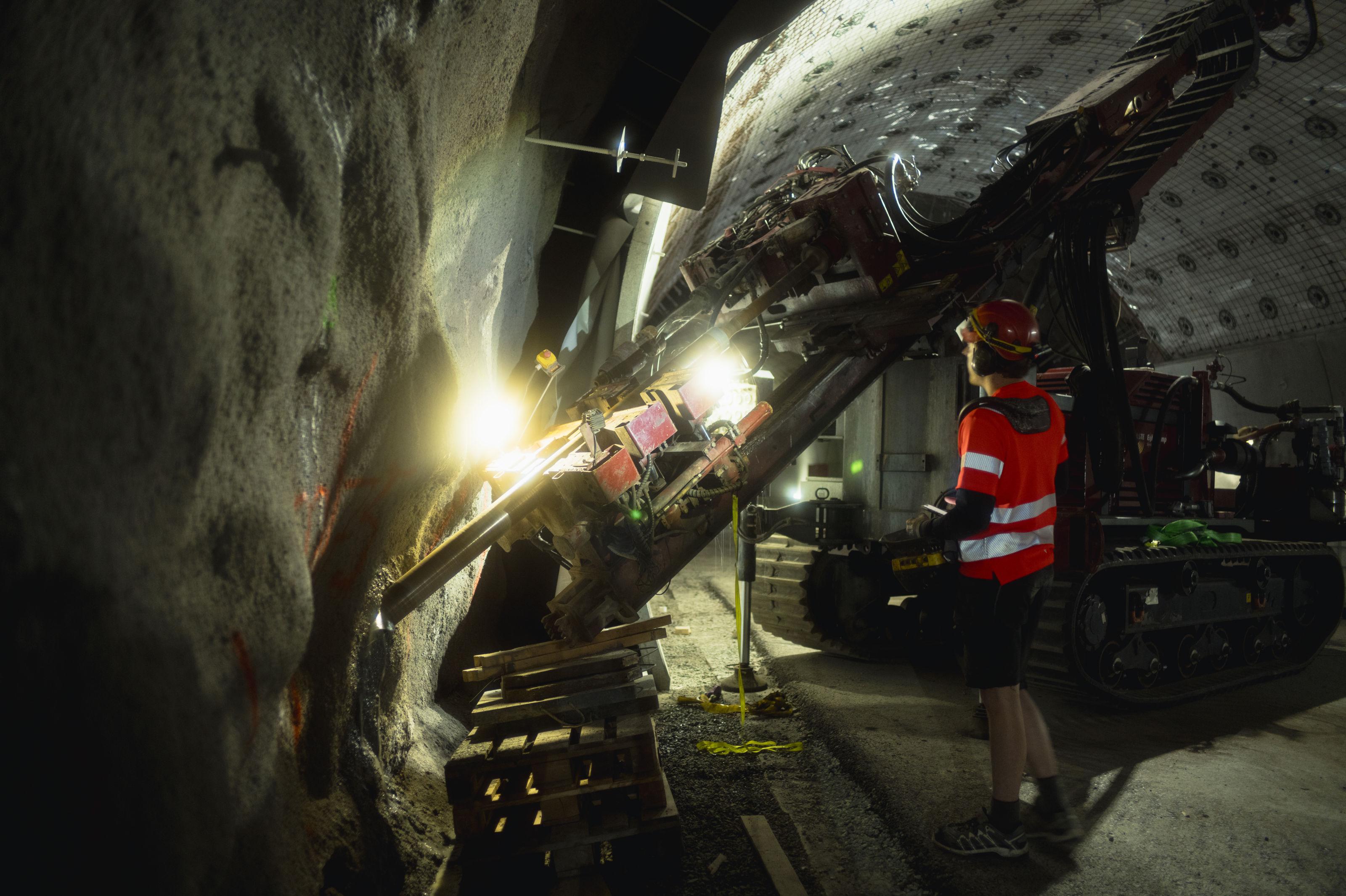We Can Build Safer Tunnels with Artificial Intelligence
Artificial intelligence is changing how we build tunnels. We can now predict hazardous rock conditions before we encounter them, leading to safer tunnels, lower costs, reduced environmental impact, and better decision-making underground.

The future of tunnel construction isn’t just about better explosives, steel, and machinery. It’s digital, data-driven, and smarter. And perhaps most importantly: safer, writes the author. ( NGI)
This article is written by Tom Frode Hansen (Senior Specialist, NGI – Norwegian Geotechnical Institute) and was first published in Forskersonen.
Every day, new tunnels are being built through rock across the country. The completed tunnels are safe, but the construction phase presents challenges.
For those working with blasting and drilling, the risk of rockfalls, water ingress, or unpredictable rock conditions is part of daily life. So how can we make this phase safer, more precise, and less costly?
My answer is: with the help of artificial intelligence.
The Difference Between Rock and Mountain:
“Rock” refers to the material we drill and blast through, while “mountain” describes the landform we see in nature. This article is about rock.
Too Many Subjective Assessments
Over many years working on various tunnel and mining projects, I’ve seen that many decisions in tunnel construction are still based on experience and often subjective judgment.
In the planning phase, we use core samples and seismic data to predict conditions. During excavation, the rock mass is assessed visually, and we analyze how the drilling machine behaves.
For example, rapid penetration into the rock may indicate weaker zones. But without the ability to see inside the rock, these assessments carry a degree of uncertainty. That’s where the risk lies.
Untapped Data
Today, we have access to far more data than we actually use. A modern drilling machine collects thousands of measurements per minute while drilling. This is called MWD data – “Measure While Drilling.”
MWD data acts like a signature of the rock: We get information about the rock’s resistance, how much water flushing is needed, and how much pressure is required to drill forward. These data are often just stored and not actively used for decision-making.
Developing Machine Learning Models to Predict What Lies Ahead
In my PhD research, I developed machine learning models that can use MWD data to predict what lies ahead of the tunnel face. What type of rock will we encounter? How weak is it? Should we reinforce the tunnel here? Can we reuse the blasted rock, or must it go to a landfill?
With such models, we can anticipate what’s coming and take action in time. Instead of waiting for a collapse, we can act before it happens.
Comparing with Thousands of Previous Cases
Here’s how it works: We collect data from the drilling machine. These are transformed into a kind of digital fingerprint of the rock. The machine learning model compares this with thousands of previous cases and suggests what type of rock we’re dealing with. It all happens in seconds.
And it’s not just the rock type we can predict. The models can also suggest what actions are needed: How far should we blast the next round? Should we reinforce the rock with extra bolts and concrete before continuing? The result is safer tunnels, less resource overuse, and lower costs.
Machine Learning Gives Engineers a New Tool to Reduce Costs and Accidents
Society has much to gain. Tunnels provide shorter travel routes, better public transport, and lower climate emissions. But they must be built safely. Rockfall accidents can cost lives and large sums of money. By using machine learning, we give engineers a new tool. A tool that doesn’t replace them, but helps them make better decisions.
Additionally, more efficient and safer tunneling can make underground mining more attractive as an alternative to large open-pit mines. This means less impact on landscapes and ecosystems, and better coexistence between resource extraction and nature conservation.
Using the Tool Improves the Models Further
When this tool is used on a large scale, we can also gather experience from tunnel construction across the country and use it to further improve the models. This creates a positive feedback loop: The more we build, the better we get. The technology can also be adapted for mining and international projects, giving Norwegian expertise a competitive edge.
A Digital and Data-Driven Future for Tunnel Construction
The future of tunnel construction isn’t just about better explosives, steel, and machines. It’s digital, data-driven, and smarter. And perhaps most importantly: safer.
With artificial intelligence, we can “see through the rock” – before we hit it.
